Items
Tag
education
-
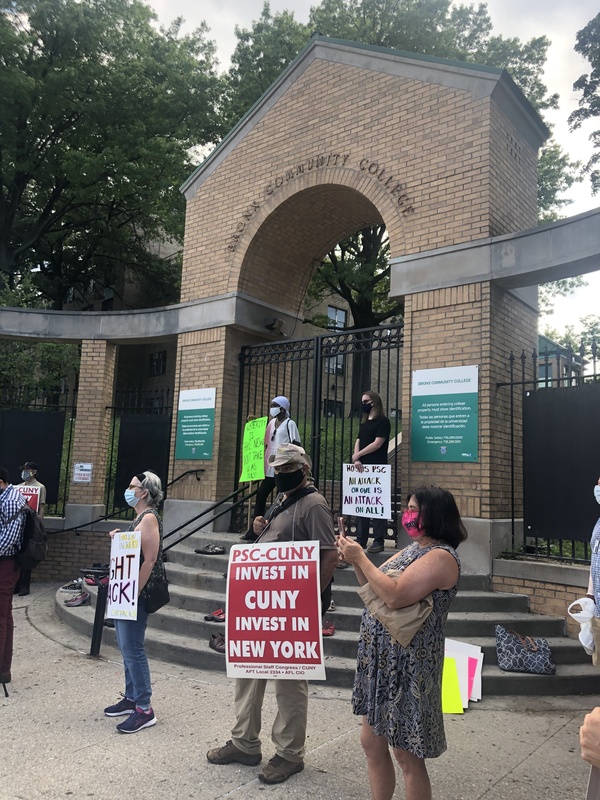 2020-07-15
2020-07-15PSC-CUNY Protest at BCC
For my primary source, I selected a photograph I took at a protest held in front of the Bronx Community College campus on July 15, 2021. The Professional Staff Union of CUNY (PSC-CUNY), the union for the faculty and much of the staff throughout CUNY, organized the event to protest the BCC administration June 26 decision to lay off 36 experienced adjunct professors at the end of their 3-year contracts, even though that their departments recommended that they be rehired. People in the picture include BCC Faculty, staff, and students, as well as those from as well as people from Hostos Community College, who came to support the BCC community and were facing similar cuts. The day was very hot, but I was nervous to the subway because of COVID, so I rode my bike from my home (about 24 miles roundtrip). I was pretty sweaty and probably stinky when I arrived. It was the first time I had been to campus since March 10, when, on my way home from school on the subway, I learned CUNY was moving online. (The campus itself was locked, but we stood in front of the gate on University.) It was also the first time I people from school in person since March; I was so happy to talk to them. It was weird to be with a group people, after months of isolation, but we all wore masks and stood six feet apart. Cars honked their support as they drove by. I selected this source because I want historians of the future to understand how the pandemic hit higher education and the connections among the COVID crisis, social justice movements, and education. Although I went to larger marches after the murder of George Floyd, I believe funding for CUNY is a form of social justice. I was angry that politicians and school administrators were giving lip-service to the phrase Black Live Manners, while cutting funding and jobs from CUNY. BCC’s students are overwhelmingly Black and Latinx, and many studies show that a CUNY education is one of the best schools for supporting social mobility, helping people support themselves and their families. Firing the adjuncts not only meant the teachers lost their income, and, sometimes, their health insurance, but that BCC students would be in larger classes; larger classes mean faculty have less time to devote to each student, which can make it harder to for students to succeed. While I understood enrollment was down and the budget from the city and state would likely be smaller because of the economic toll of the pandemic, I thought there were other places the administration could cut costs. (Such as their own salaries). I want historians to see that the faculty and staff of CUNY fought for what their students deserved and the connections among CUNY, social justice, and New York’s economic recovery. I also want them to see how people approached protests, which require gathering together with other people and often chanting or shouting, while in the middle of a pandemic that required people to stay apart and cover their mouths. -
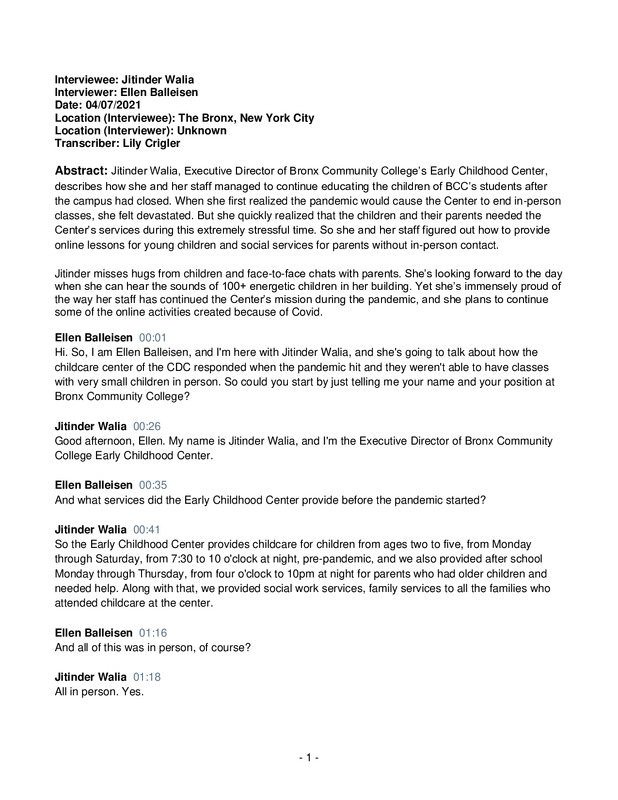 04/07/2021
04/07/2021Jitinder Walia Oral History, 2021/04/07
Jitinder Walia, Executive Director of Bronx Community College’s Early Childhood Center, describes how she and her staff managed to continue educating the children of BCC’s students after the campus had closed. When she first realized the pandemic would cause the Center to end in-person classes, she felt devastated. But she quickly realized that the children and their parents needed the Center’s services during this extremely stressful time. So she and her staff figured out how to provide online lessons for young children and social services for parents without in-person contact. Jitinder misses hugs from children and face-to-face chats with parents. She’s looking forward to the day when she can hear the sounds of 100+ energetic children in her building. Yet she’s immensely proud of the way her staff has continued the Center’s mission during the pandemic, and she plans to continue some of the online activities created because of Covid. -
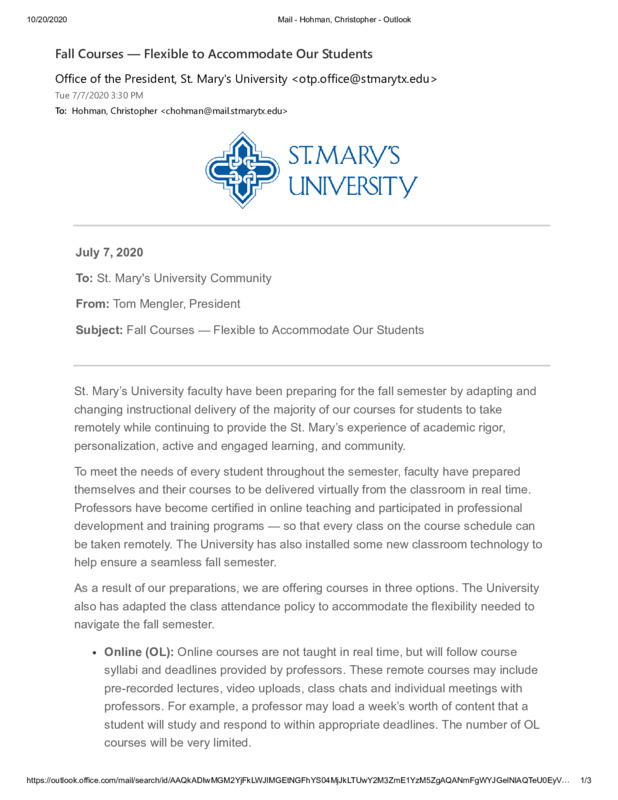 2020-07-07
2020-07-07Fall 2020 Course Format Options for Students at St. Mary’s University
This email was sent out to the St. Mary’s University community on July 7, 2020, to explain the three different formats in which courses would be offered for the Fall 2020 semester. The university would offer three different formats for the then-upcoming semester. The first format offered was online courses (OL). These courses were not taught in person, but they still follow a syllabus and have course deadlines. They could include pre-recorded lectures, video uploads, class chats, and individual meetings with professors. The next course format offered was Virtual (V). These courses would meet at an appointed time and date, similar to a normal in-person class, but on the Zoom conference platform, and they would be led by a professor who could be teaching from a variety of different environments. They would not meet in person or on campus, just virtually. Similar to online courses these courses might also include class chats, video recordings, and one on one meetings with professors. The last course format offered was In-Person Virtual (IPV). These courses were designed as hybrid courses. Students would be able to attend these courses in person in a traditional classroom environment (though class size would be limited), or they could attend the class virtually through Zoom. All of the course formats described above were offered by my university in response to the COVID19 pandemic, and they demonstrate the need for adaptation and change in the era of COVID19. The author of this post has been able to attend both virtual and in-person virtual classes at St. Mary’s University this semester. Speaking from firsthand experience, I can attest to how different being in the classroom is this semester. There are not a lot of students in the class; at most maybe three students on any given day. Those of us in the classroom, students, and teachers, sit in socially distanced seats, and we all have our masks up. Regardless, I am grateful that I have had the chance to try to forge a new normal for myself during such an abnormal time for our university and our world. -
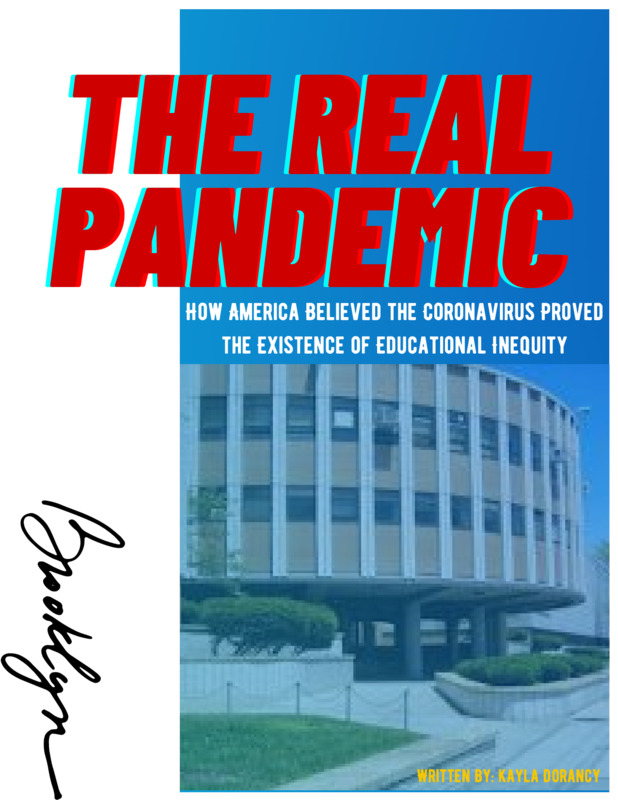 2020-03-20
2020-03-20The Real Pandemic: How America Believed the Coronavirus Proved the Existence of Educational Inequity
I am submitting an auto-ethnography on my experience as a college student in the CUNY educational system during the transition to online learning and the pandemic. -
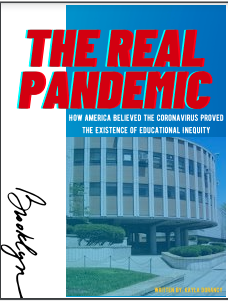 2020-08
2020-08The Real Pandemic: How America Believed The Coronavirus Proved the Existence of Educational Inequity
Several articles seek to expand the conversation of educational inequity during the pandemic in New York City public schools, however many exclude key aspects of inequality that predate the pandemic. This narrative acknowledges and challenges notions that use the pandemic to explain the inequality. It is not only my personal experience throughout the pandemic, but also the experiences around public education of me, my students, and co-workers. Amplifying the necessity for leadership, mental health, and technology to combat the concerns of racial and class retraumatization, the aspiration and achievement gap, and other aspects of inequity. In this analysis, we transform ideas about inequality in relation to [rather than caused by] the pandemic and challenge readers to think about solutions in a different way. -
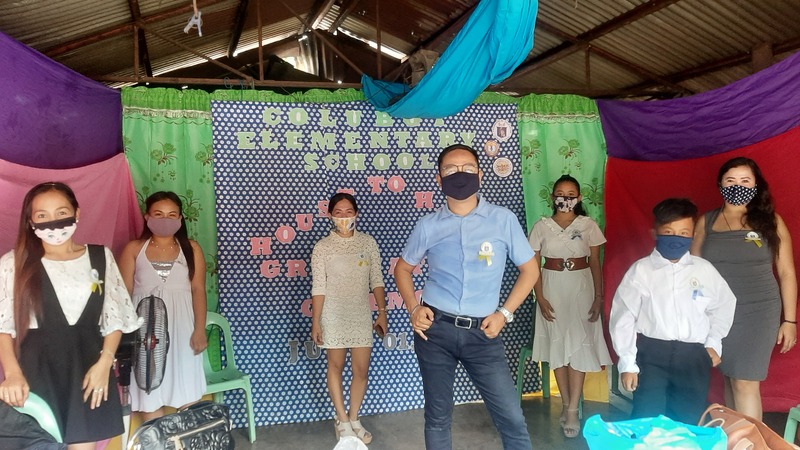 2020-07-01
2020-07-01House to House Graduation - Continuing the Educational Journey of the Children Amidst the Pandemic
The photos want to convey the positivity and strong spirit of the youth and the teachers to continue educational schemes amidst the pandemic. It is the first time to launch HOUSE TO HOUSE GRADUATION. The teachers with my supervision as the School Principal, we visited their homes to give the credits and surprises for our Grade 6 graduating pupils. Because we appreciate their efforts for the whole school year as well as the double sacrifices of their parents, we realized our program "House to House Graduation Ceremony". We sent letter to the Barangay Captain and we talked to the Supervisor about this scheme. We strictly followed guidelines and protocols from IATF, DILG, LGU and DEPED so that everyone is safe. We really treasured these moments forever. -
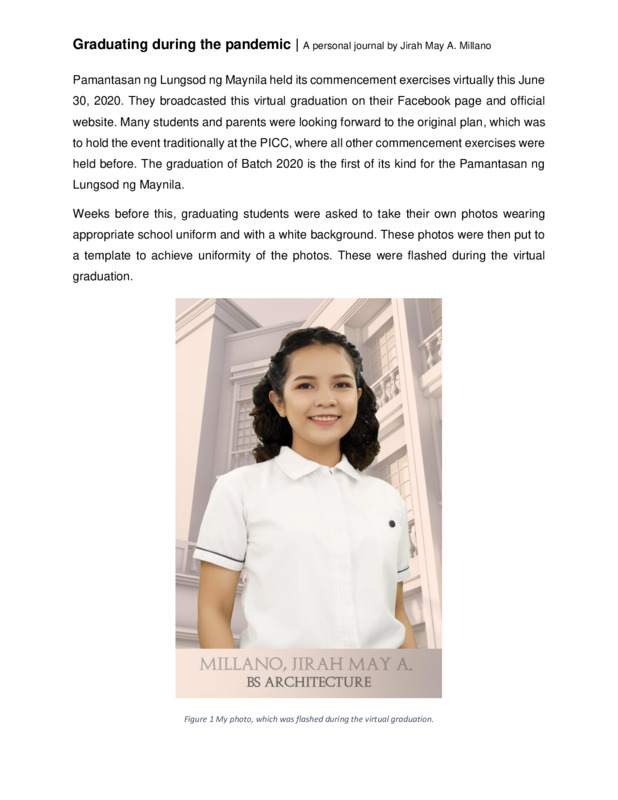 2020-07-12
2020-07-12Graduating during the pandemic
This personal journal tells what is it like for me, graduating during the pandemic. With ways of celebrating this milestone totally changing, and with my mother having to work at the health center on that day, this virtual graduation experience was really different. -
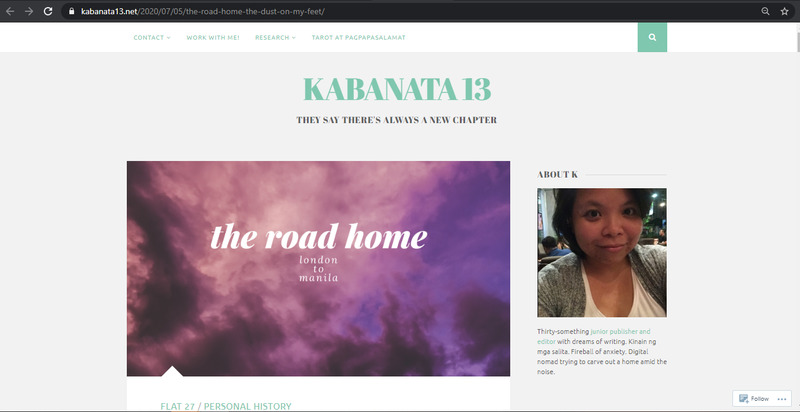 2020-07-20
2020-07-20The Road Home & the dust on my feet
I returned to the Philippines from London in June, and I wanted to make sure that my experience was catalogued among others like it. I'm planning to add more entries, but this is the first. I wrote it out very like a report, and the succeeding entries will likely expound a little bit more about the experience, firsthand, of bureaucracy on the ground, and the people it most affects; how slowly the government response arrives, and who bears the brunt of this inefficiency. -
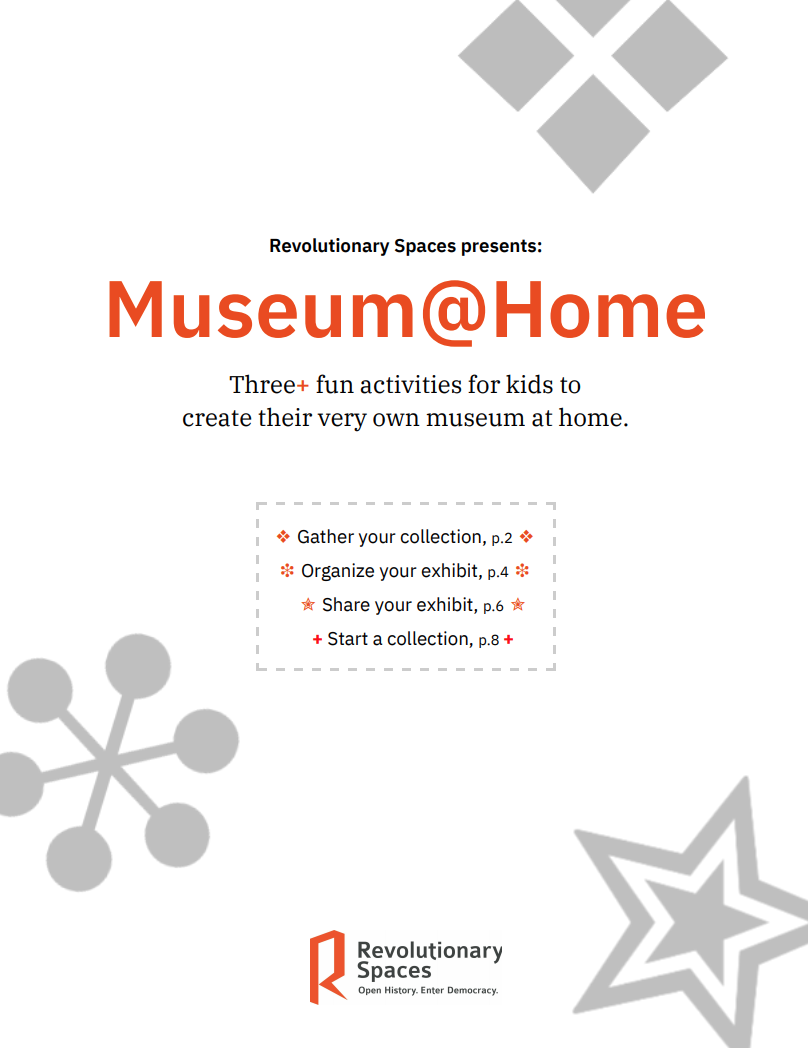 2020-05-11
2020-05-11Museum@Home
In celebration of Museum Week 2020, Revolutionary Spaces built an interactive activity/lesson plan to teach people about the collections, exhibits, and gallery talks at their two historic sites. The activities also invite kids and families to create their own museum at home. The activities were also posted on Revolutionary Spaces' website. -
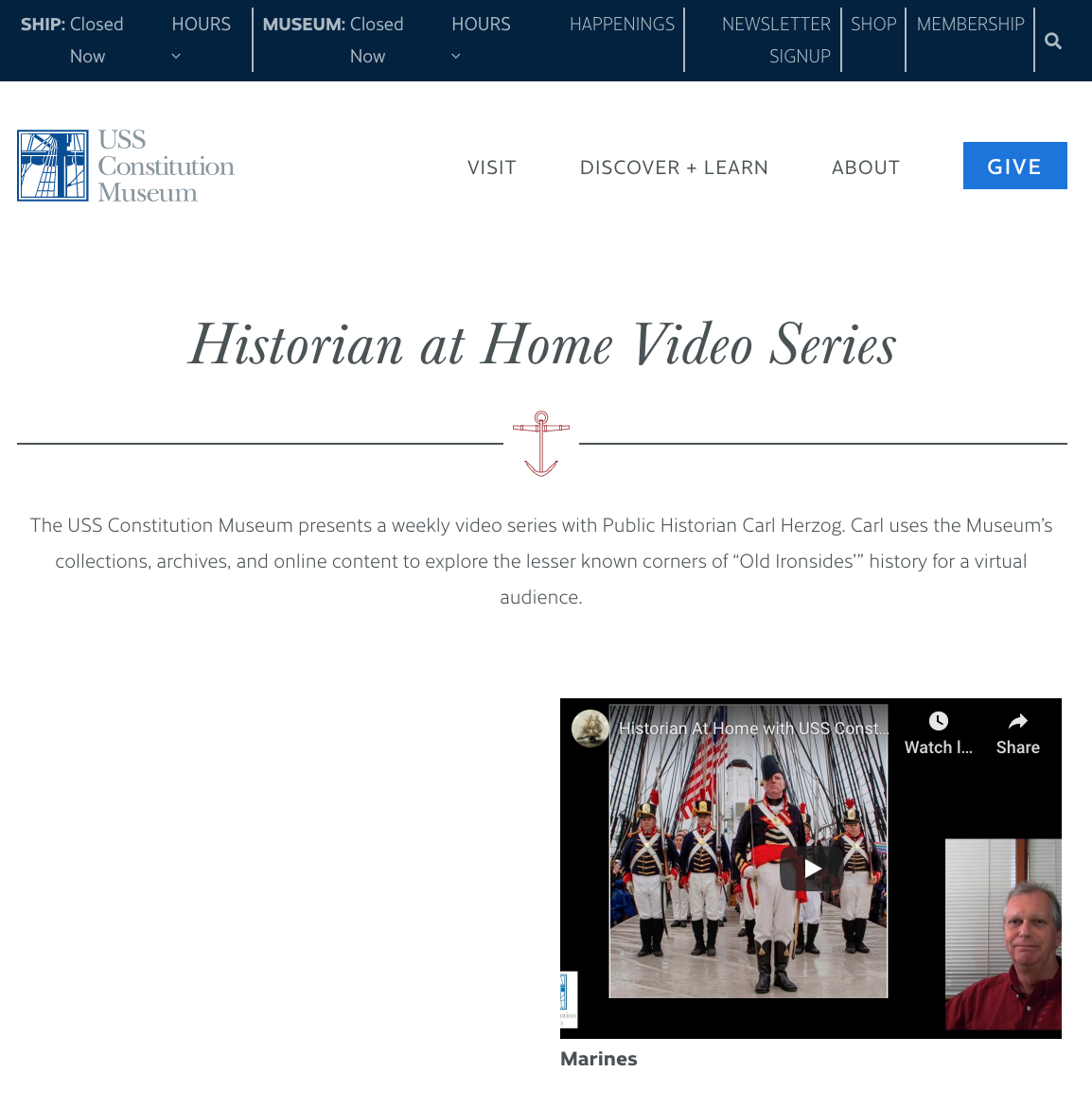 2020-06-10
2020-06-10Historian at Home Video Series
The USS Constitution Museum presents a weekly video series with Public Historian Carl Herzog. Carl uses the Museum’s collections, archives, and online content to explore the lesser known corners of “Old Ironsides’” history for a virtual audience. -
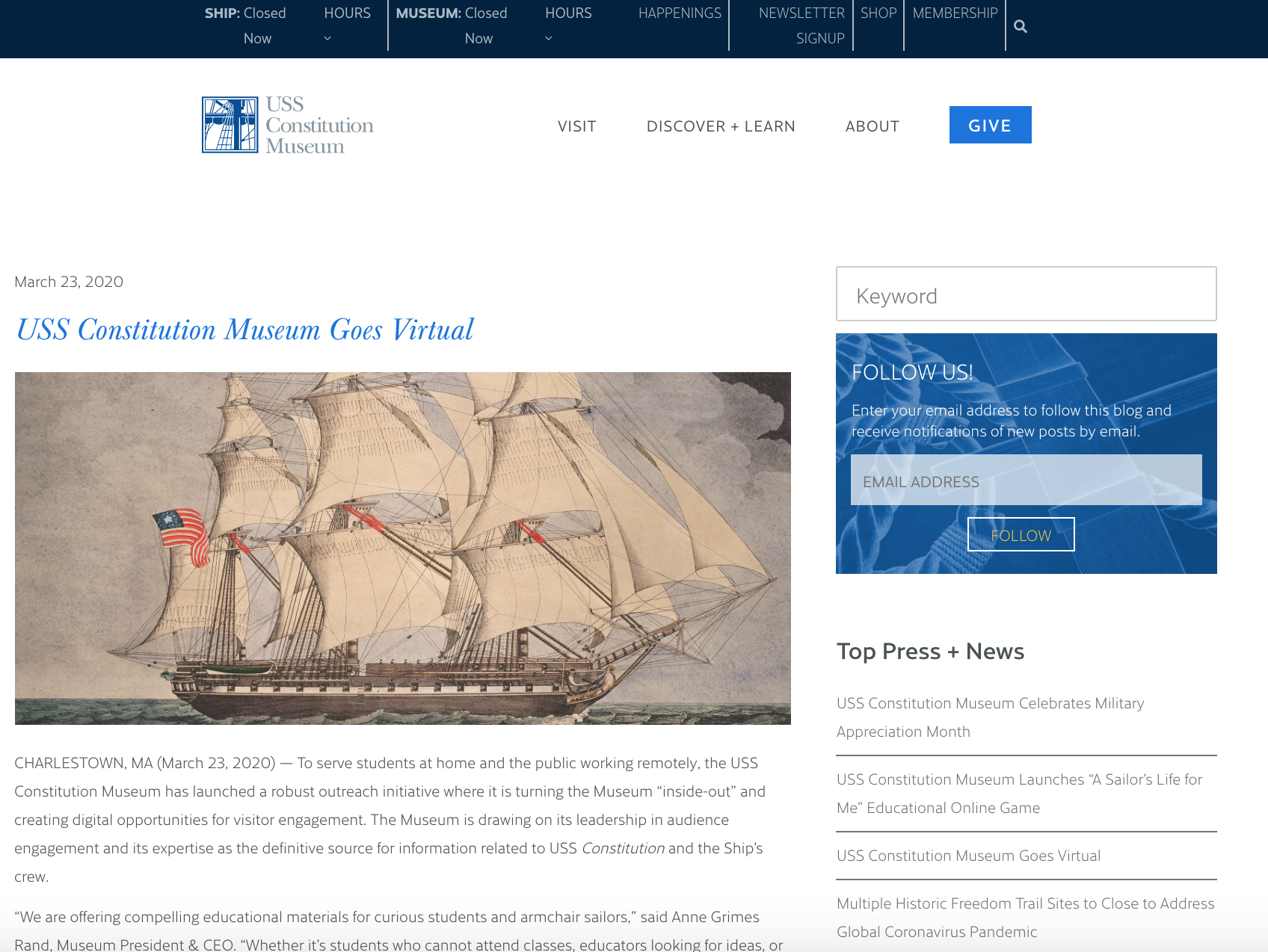 2020-03-23
2020-03-23USS Constitution Museum Goes Virtual
USS Constitution Museum announcement that the Museum has "launched a robust outreach initiative where it is turning the Museum 'inside-out' and creating digital opportunities for visitor engagement." Part of the Museum's work to address social distancing during COVID19. -
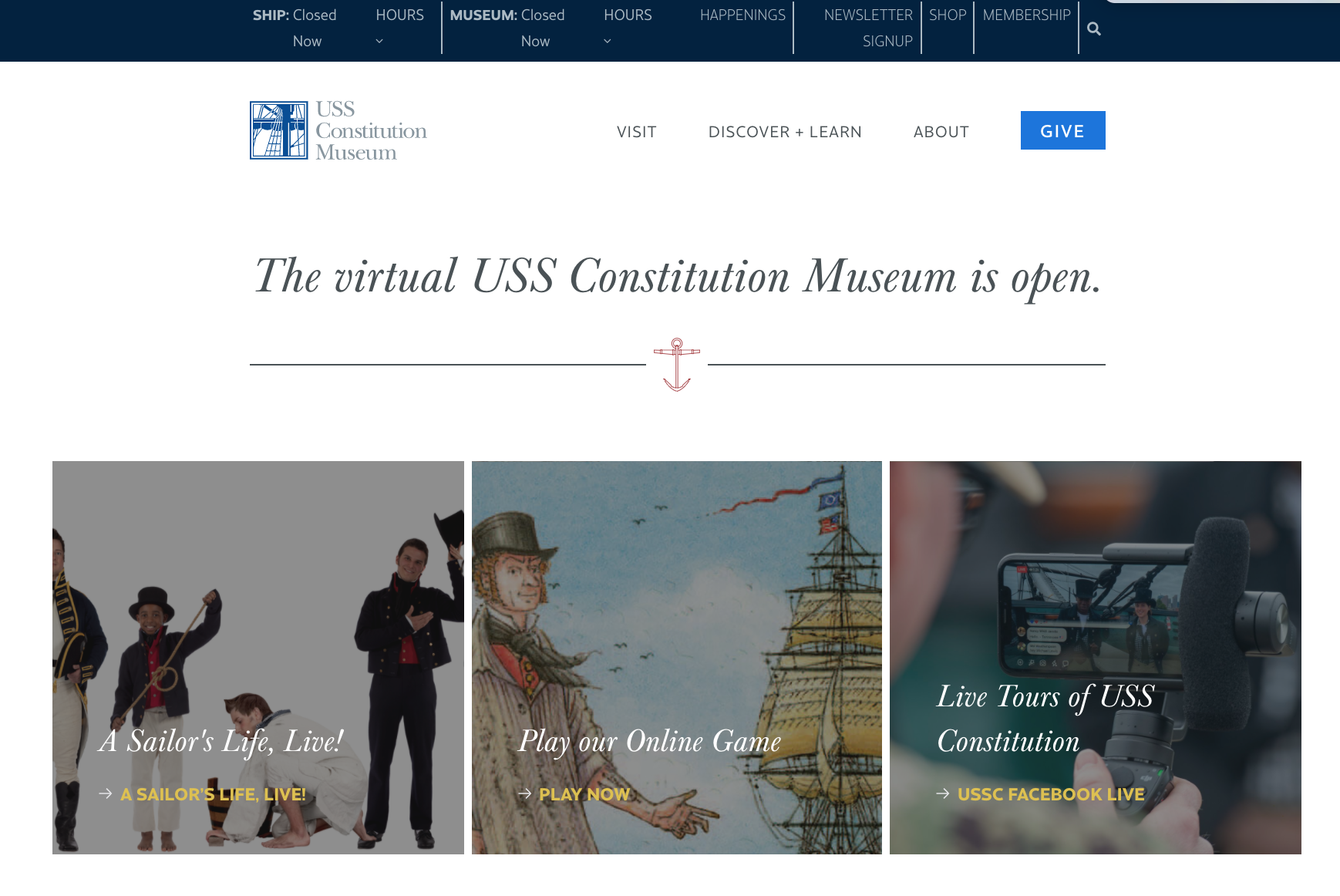 2020-06-10
2020-06-10The virtual USS Constitution Museum is open
The USS Constitution Museum website has pivoted to encourage online engagement with the museum. The new home page offers online games, live tours, and various "at home" activities for museum visitors to explore during social distancing due to COVID19.
